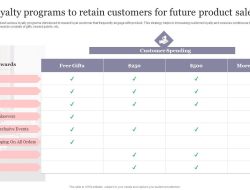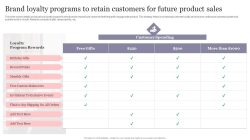Creative Marketing Approaches for Unconventional Product Categories sets the stage for this enthralling narrative, offering readers a glimpse into a story that is rich in detail and brimming with originality from the outset.
In today’s dynamic marketplace, unconventional product categories present unique challenges and exciting opportunities for brands willing to think outside the box. These products, often overlooked by traditional marketing strategies, require innovative approaches that resonate with niche audiences. By understanding the distinct characteristics of unconventional products and deploying targeted marketing tactics, businesses can unlock the potential of these unique offerings and captivate their consumers in novel ways.
Understanding Unconventional Product Categories
In today’s dynamic market, unconventional product categories represent a brave new frontier for marketers. These are products that defy traditional classifications and target niche audiences often overlooked by mainstream marketing strategies. Understanding these categories is crucial for brands seeking to innovate and connect with unique consumer needs.Unconventional product categories can include items such as smart home devices like doorbell cameras, subscription boxes for niche interests like vegan snacks, or even eco-friendly alternatives like biodegradable glitter.
The uniqueness of these products presents both opportunities and challenges. Marketers often face hurdles in educating consumers about the benefits and uses of such innovative offerings. Unlike traditional products, unconventional items may require a more in-depth explanation of their value and functionality.
Characteristics of Unconventional Products
Unconventional products can be distinguished from traditional products based on several key characteristics, which can significantly influence marketing strategies. The following points highlight these unique traits:
- Niche Targeting: Unconventional products typically cater to specific sub-groups of consumers with distinct interests or needs. For instance, a line of luxury dog foods targets pet owners who prioritize high-quality ingredients and gourmet options for their pets.
- Innovative Features: These products often incorporate cutting-edge technology or design elements that set them apart. For example, a smartwatch designed specifically for outdoor enthusiasts may include features like GPS tracking, weather alerts, and rugged durability.
- Educational Marketing: Successful marketing of unconventional products often relies on educating consumers about their unique benefits and uses. For instance, a company selling air purifiers that use natural materials must explain how they differ from standard air purification systems.
- Community Engagement: Many unconventional products thrive through building a community around their brand. Subscription box services like FabFitFun engage users with social media platforms, encouraging sharing and discussion about their products.
- Sustainability and Ethics: A growing number of unconventional products focus on sustainability, appealing to eco-conscious consumers. Brands that produce upcycled fashion items highlight the environmental benefits, positioning themselves as ethical choices in the marketplace.
Understanding the nuances of unconventional products allows marketers to craft targeted strategies that resonate deeply with specific consumer segments.
Innovative Marketing Strategies

In a world where conventional products dominate the marketplace, innovative marketing strategies provide a unique lifeline for unconventional product categories. These strategies harness creativity and unconventional thinking to capture consumer attention and foster brand loyalty. By leveraging various channels and unique approaches, brands can effectively communicate their value propositions and differentiate themselves from the competition.Innovative marketing strategies for unconventional products not only highlight the product’s unique features but also establish a connection with consumers.
Below are a few key strategies along with effective channels that have proven successful in promoting unconventional products.
Creative Campaigns
Creative campaigns involve the use of storytelling, humor, and unexpected presentations to engage audiences. They can often turn a simple product launch into a memorable event. Here are a few strategies to consider:
- Experiential Marketing: Create immersive experiences that allow consumers to interact with the product firsthand. For instance, a company selling edible spoons set up tasting booths in local markets, enabling consumers to sample their product while enjoying their favorite soups.
- Influencer Collaborations: Partner with social media influencers whose audience aligns with the target market. A company offering eco-friendly cleaning products collaborated with a well-known sustainability influencer, highlighting the product’s benefits through authentic storytelling.
- User-Generated Content: Encourage customers to share their experiences with the product on social media. A brand selling quirky home decor items ran a campaign inviting users to showcase how they incorporated the products into their homes, resulting in vibrant and authentic content.
Digital Platforms
Digital platforms serve as effective channels for promoting unconventional products, offering diverse ways to reach target audiences. The following channels should be prioritized:
- Social Media Advertising: Platforms like Instagram and TikTok are ideal for visually appealing products. A company specializing in unusual pet accessories successfully utilized Instagram Stories to feature their products in creative scenarios, reaching a broad audience through engaging visuals.
- Content Marketing: Develop informative and entertaining blogs or videos that relate to the product. For instance, a brand selling innovative kitchen gadgets created a series of recipe videos that incorporated their products, generating interest and driving traffic to their website.
- Email Campaigns: Utilize segmented email lists to personalize marketing messages. A startup offering subscription boxes for unique snacks sent tailored emails featuring customer testimonials and exclusive offers, resulting in higher engagement rates.
Case Studies of Successful Campaigns
Several brands have successfully implemented unconventional marketing strategies to great effect. Here are notable case studies:
- Dollar Shave Club: With a humorous launch video that went viral, Dollar Shave Club disrupted the shaving industry by promoting a subscription service for razors. The video showcased their brand personality while clearly communicating the value of their product, leading to rapid growth and widespread recognition.
- GoPro: By encouraging users to share their adventure videos, GoPro transformed its customers into brand advocates. The company leveraged user-generated content, showcasing real-life footage taken with their cameras, which appealed strongly to the target market and built a community around the brand.
- Blendtec: The “Will It Blend?” campaign featured the company’s blenders destroying various unusual items, from smartphones to golf balls. This inventive approach not only demonstrated the product’s power but also garnered massive attention online, making Blendtec a household name.
Target Audience Identification
Identifying the target audience is crucial for the success of marketing strategies, especially when dealing with unconventional product categories. These products often cater to niche markets that require a well-defined understanding of potential customers to create effective marketing campaigns. By pinpointing who the customers are, marketers can tailor their messages and product offerings to meet specific needs.Accurately defining target audiences involves a combination of demographic, psychographic, and behavioral analysis.
This comprehensive approach allows marketers to develop detailed customer personas, which serve as representations of the ideal consumer. These personas guide marketing strategies by highlighting preferences, motivations, and potential pain points that influence purchasing decisions.
Methods for Identifying Target Audiences
Utilizing various methods to identify target audiences ensures a nuanced understanding of consumer behavior, especially for unconventional products. Here are some strategic approaches:
- Market Research: Conduct surveys, focus groups, and interviews to gather quantitative and qualitative data. This can unveil insights about customer preferences, desires, and behaviors.
- Social Media Analytics: Monitor engagement metrics and consumer interactions on social media platforms to identify trends and sentiments that resonate with niche markets.
- Customer Feedback: Collect and analyze feedback from existing customers to understand their experiences and expectations. This can provide valuable information on what attracts and retains this audience.
- Competitive Analysis: Study competitors targeting similar audiences to identify successful strategies and gaps in the market that can be exploited.
Understanding the target audience is not merely about demographics; it involves creating intricate customer personas that encapsulate various aspects of the consumer experience.
“Customer personas are not just profiles; they are the gateway to understanding motivations and barriers in the purchasing journey.”
Importance of Customer Personas
Customer personas are integral in shaping marketing strategies for unconventional products. These personas encapsulate detailed characteristics of target customers, including their interests, behaviors, and pain points. By leveraging customer personas, businesses can create personalized marketing messages that resonate more deeply with consumers.Developing customer personas involves synthesizing data collected from various sources. This data can include:
- Demographics: Age, gender, location, income, and education level.
- Psychographics: Interests, values, lifestyle choices, and personality traits.
- Behavioral Data: Purchase history, product usage, and brand loyalty.
Crafting these personas provides a foundation for targeted campaigns, ensuring that marketing efforts address specific needs and preferences. The more accurately these personas reflect the target audience, the more effective the marketing strategy will be.
Gathering Insights on Niche Markets
To effectively gather insights about niche markets, a multi-faceted approach is essential. Engaging with these audiences requires understanding their unique behaviors and preferences through comprehensive analysis and targeted research.Key methods to gain insights include:
- Online Communities: Join forums, social media groups, and niche networks where potential customers congregate. Observing discussions can provide insights into their interests and pain points.
- Behavior Tracking: Utilize web analytics tools to track user behavior on websites. Understanding how users navigate and interact can reveal valuable information about their preferences.
- Trend Analysis: Stay updated on industry trends and emerging consumer behaviors through reports, studies, and market analysis. This helps in anticipating changes in niche market preferences.
By employing these methods, businesses can gather a wealth of information to refine their marketing strategies and resonate with their audiences effectively. With a thorough understanding of the target audience, companies can position their unconventional products for maximum impact.
Creative Content Development
In today’s rapidly evolving marketplace, unconventional product categories demand innovative content that speaks directly to their unique target audiences. Crafting compelling and resonant content is vital to capturing consumer interest and fostering brand loyalty. This segment explores how to develop creative content that not only engages but also creates an emotional connection with consumers.Effective content development requires a deep understanding of the brand’s identity and the audience’s preferences.
Storytelling serves as a powerful tool in this process, allowing brands to communicate their values and vision in an impactful manner. By weaving narratives that resonate with consumers, brands can differentiate themselves in a crowded market.
Storytelling Techniques for Engagement
Storytelling is an art that, when done effectively, can elevate a brand and create memorable experiences for consumers. Here are some techniques to incorporate storytelling into your content strategy:
- Customer-centric Narratives: Place the customer at the heart of your story. Share testimonials and user-generated content that highlight real experiences with your product. These narratives create relatability and build trust.
- Emotional Connections: Craft stories that evoke emotions. Whether it’s humor, nostalgia, or inspiration, tapping into feelings can make your content more relatable and shareable.
- Visual Storytelling: Use images, videos, and infographics to enhance your narrative. A compelling visual can convey complex ideas quickly and effectively, making your story more engaging.
- Brand Journey: Share the history and evolution of your brand. Customers love to hear about the passion and struggles behind a product, fostering a deeper connection.
Engaging storytelling not only resonates with consumers but also solidifies brand identity, making it essential for unconventional products.
Effective Content Formats for Unconventional Products
Diverse content formats can be utilized to effectively communicate with the target audience. The right format can enhance the message and attract specific demographics. Consider the following examples of impactful content formats:
- Interactive Experiences: Create quizzes, polls, or interactive infographics that allow consumers to engage actively with your brand. This format can offer personalized experiences, making them more memorable.
- Short-form Videos: Utilize platforms like TikTok or Instagram Reels to create engaging short videos that highlight product features or tell a story in an entertaining way. These formats cater to today’s fast-paced consumption habits.
- Blog Articles: Develop in-depth articles that educate consumers about your unconventional product. Use strategies to increase visibility and attract organic traffic.
- Podcasts: Launch a podcast series discussing topics relevant to your product category, incorporating interviews with industry experts or satisfied customers. This format builds a community and positions your brand as an authority.
Employing various content formats helps to reach a wider audience and keeps the engagement fresh and dynamic, which is particularly crucial for unconventional products that might require additional explanation and context.
Leveraging Social Media and Influencers
Utilizing social media platforms and influencer collaborations is essential for capturing the attention of audiences for unconventional products. These digital channels provide unique opportunities to engage with potential customers, establish brand identity, and promote products in creative ways that resonate with niche audiences.Social media platforms like Instagram, TikTok, and Twitter offer tools and features that can enhance visibility for unconventional products.
For brands venturing into unique markets, understanding the particular dynamics of each platform helps in crafting effective campaigns that align with user behavior and preferences. Engaging content, such as vivid imagery, short videos, and interactive posts, can be pivotal in drawing attention and encouraging shares.
Influencer Marketing Tactics for Niche Markets
Identifying and collaborating with influencers who have a strong presence in specific niches can significantly enhance a brand’s reach and credibility. The following tactics are particularly effective in engaging audiences for unconventional products:
- Micro-Influencer Collaborations: Partnering with influencers who have smaller but highly engaged followings can result in more authentic connections with potential customers. These influencers often have a loyal audience that trusts their recommendations.
- Content Co-Creation: Collaborating with influencers to co-create content gives an authentic touch to marketing campaigns. This could involve featuring the product in relatable scenarios that resonate with the influencer’s audience.
- Exclusive Previews or Launch Events: Offering influencers the chance to preview a product before its official launch can generate buzz and anticipation. This approach also provides influencers with unique content to share with their audience.
- Storytelling Approaches: Encouraging influencers to tell personal stories about how they use the product can create emotional connections and relatability, increasing the likelihood of audience engagement.
- Engagement and Feedback: Influencers can facilitate direct interaction with their audience, gathering feedback and insights that can inform future marketing strategies while fostering community around the product.
Measuring the success of social media campaigns for unconventional products involves analyzing various metrics that reflect engagement and conversion. Key performance indicators (KPIs) provide insights into how well a campaign is performing and whether it meets marketing goals.
- Engagement Rates: This includes likes, shares, comments, and overall interaction with the content, indicating how well the audience is responding to the material.
- Reach and Impressions: Metrics that show how many users have seen the content can provide insight into the effectiveness of distribution and visibility strategies.
- Click-Through Rates (CTR): Monitoring how many users click on links provided in posts can reveal how compelling the call to action is.
- Conversion Rates: Tracking sales or leads generated from social media campaigns can directly showcase the effectiveness of influencer partnerships and ad strategies.
- User-Generated Content: Encouraging customers to share their experiences can amplify brand presence and provide valuable insights into customer satisfaction and product usage.
“Success in social media marketing for unconventional products lies not just in the number of followers, but in the quality of engagement and the authenticity of connections created.”
Experiential Marketing Approaches
Experiential marketing is an innovative strategy that immerses consumers in a brand experience, allowing them to engage with a product in a meaningful way. For unconventional products, this approach is crucial as it not only creates memorable interactions but also fosters emotional connections that drive brand loyalty.Experiential marketing transforms the typical consumer-brand relationship by emphasizing firsthand engagement. This method is particularly effective for unconventional products, as it allows potential customers to explore unique features, benefits, and uses in settings that resonate with their lifestyle.
By creating authentic experiences, brands can differentiate themselves in crowded markets, generating buzz and encouraging word-of-mouth promotion.
Successful Experiential Marketing Campaigns
Successful experiential marketing campaigns demonstrate the power of engaging consumers directly. Noteworthy examples include:
- Red Bull Stratos: This campaign featured Felix Baumgartner’s record-breaking skydive from the edge of space. By combining extreme sports with a thrilling event, Red Bull captivated global audiences and effectively showcased its brand persona.
- Airbnb’s “Night At” Campaign: Airbnb offered customers unique lodging experiences, such as staying overnight in a museum or a historic landmark. This not only highlighted their diverse offerings but also created buzz through social sharing.
- Coca-Cola’s “Share a Coke”: This campaign invited consumers to find bottles with their names on them. The personal connection prompted people to share their experiences online, significantly increasing sales and brand engagement.
Designing an Experiential Marketing Event for Unconventional Products
Creating a successful experiential marketing event involves careful planning and creativity. For example, consider an unconventional product like a high-tech smart plant pot that monitors and nurtures plants. An event could be designed around the theme of “Garden of the Future.”This event could feature:
- Interactive Demonstrations: Set up stations where attendees can interact with the smart pot, witnessing live plant care technology. Each station could highlight different features such as water level monitoring and nutrient delivery, allowing users to engage directly with the product.
- Workshops: Host workshops led by gardening experts who teach attendees how to integrate technology into their gardening routines, thereby adding value to the experience while showcasing the product’s benefits.
- Virtual Reality Experience: Create a VR experience where attendees can step into a virtual garden, exploring various plants and their care, all while experiencing how the smart pot enhances the gardening process.
- Social Media Engagement: Encourage attendees to share their experiences on social media with a dedicated hashtag. Set up an aesthetically pleasing photo booth with the product as a backdrop, enticing participants to capture and share their moments.
By implementing these elements, the event can effectively engage the target audience, fostering meaningful connections and driving product awareness in a memorable fashion.
Collaborations and Partnerships: Creative Marketing Approaches For Unconventional Product Categories
In the ever-evolving landscape of marketing, collaborations and partnerships emerge as powerful catalysts that can amplify the reach and appeal of unconventional products. By joining forces with complementary brands or organizations, businesses can leverage shared audiences and resources to create impactful campaigns that resonate with consumers.Partnering with other brands can provide a multitude of benefits, including expanded visibility, enhanced credibility, and access to new customer segments.
These collaborations can lead to innovative marketing initiatives that not only capture attention but also foster deeper connections with target audiences. By aligning with partners that share similar values or market demographics, brands can craft experiences that are mutually beneficial, creating a win-win scenario.
Potential Collaboration Opportunities
Identifying potential collaboration opportunities is crucial for maximizing marketing efforts. The following innovative partnership ideas can drive engagement and sales for unconventional products:
- Cross-Promotion with Complementary Brands: Partner with brands that offer products or services that complement your own. For example, a company selling eco-friendly pet toys could collaborate with a local animal shelter to promote pet adoption events.
- Collaborative Product Launches: Develop a limited-edition product in partnership with another brand. A cosmetics brand could collaborate with a fashion designer to create a unique makeup line inspired by a clothing collection.
- Influencer Partnerships: Align with influencers who resonate with your brand ethos. For instance, a niche vegan food company could collaborate with a prominent vegan lifestyle influencer for recipe creation and promotional content.
- Event Sponsorships: Co-sponsor community events or workshops that align with your brand. A sustainable fashion line could partner with an environmental organization to host a fashion show focused on eco-conscious styles.
- Shared Content Creation: Work with partners to create engaging content that showcases both brands. A fitness brand could collaborate with a health food company to produce a series of workout and nutrition videos.
Measuring Success and Adapting Strategies
In the fast-paced world of unconventional products, measuring success is crucial for understanding the impact of marketing campaigns. By accurately tracking performance, businesses can identify what resonates with their audience and refine their strategies accordingly. This adaptability ensures that marketing efforts remain effective in a continuously evolving marketplace.Understanding the metrics and key performance indicators (KPIs) relevant to unconventional product categories can provide valuable insights.
The effectiveness of marketing campaigns can be quantified through various metrics that reflect engagement, reach, and conversion rates.
Key Metrics and KPIs
Selecting the right metrics is essential for measuring the success of marketing endeavors. The following metrics serve as a compass for evaluating campaign performance:
- Engagement Rate: Measures the level of interaction consumers have with content, revealing how well the marketing resonates with the audience.
- Conversion Rate: Indicates the percentage of visitors who take a desired action, such as purchasing a product or signing up for a newsletter, which directly reflects campaign effectiveness.
- Customer Acquisition Cost (CAC): The total cost of acquiring a new customer, offering insights into the efficiency of marketing spend.
- Return on Investment (ROI): Calculates the profitability of marketing campaigns by comparing the revenue generated against the costs incurred.
- Customer Lifetime Value (CLV): Estimates the total revenue a customer is expected to generate during their relationship with the brand, highlighting the importance of long-term engagement.
Implementing feedback loops is essential for refining marketing strategies based on actual performance data. Businesses must actively seek feedback through customer surveys, social media polls, and direct engagement with consumers. This two-way communication not only fosters customer loyalty but also provides actionable insights into product reception and marketing effectiveness.
Implementing Changes Based on Performance Data, Creative Marketing Approaches for Unconventional Product Categories
Adapting marketing strategies in response to performance data is crucial for maintaining relevance in the market. The process can be broken down into several actionable steps:
- Analyze Data: Regularly review performance metrics to identify trends, successes, and areas for improvement.
- Prioritize Feedback: Use customer feedback to guide adjustments, focusing on what resonates most with the target audience.
- Test and Iterate: Implement A/B testing for various marketing approaches to determine which strategies yield better results.
- Stay Informed on Market Trends: Continuously monitor industry trends and emerging patterns in consumer behavior to adapt marketing efforts proactively.
- Collaborate with Influencers: Leverage insights from influencers who resonate with the target audience to refine messaging and outreach strategies.
“Adapting to consumer insights and evolving market trends is not just beneficial but essential for the longevity of unconventional product marketing.”










